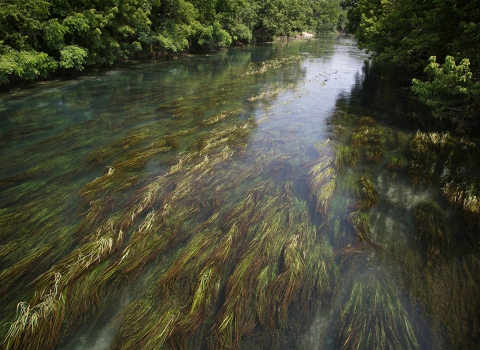The U.S. Fish and Wildlife Service is announcing the final decision to downlist the Furbish’s lousewort from endangered to threatened under the federal Endangered Species Act (ESA).
The status change is a milestone for the perennial plant, which was one of the first to be protected under the ESA.
At the time of listing, the species faced a heightened risk of extinction because of a controversial hydroelectric dam project that would have flooded 80,000 acres of Maine’s north woods, including most of the plant’s native habitat. In 1986, Congress deauthorized the proposed dam project for a number of reasons, eliminating the primary threat to the Furbish’s lousewort.
Since the plant’s listing, the Maine Natural Areas Program, the Service, Environment Canada and members of the forest products industry have taken proactive conservation measures to protect it throughout its narrow range along the Saint John River in Maine and Canada, and it no longer faces a risk of extinction in the near term.
Reaching about two feet high when mature, the Furbish’s lousewort is distinguished by alternate fern-like leaves widely spaced along a stem topped by a tight cluster of small, tube-like yellow flowers.
It is also distinguished by its specific habitat requirements: It depends upon periodic scouring of the riverbanks by ice to provide the right conditions for it to grow and to keep competitive plant species at bay.
Scientists from Maine began to survey for the Furbish’s lousewort in the 1980s with support from federal endangered species grants. Today, two-thirds of the subpopulations discovered still exist. Although the plant has been extirpated from several sites, the Furbish’s lousewort continues to grow at 20 separate places along 140 river miles.
While the lousewort no longer meets the definition of endangered, it does meet the definition of threatened. Changing temperature and precipitation patterns as a result of climate change climate change
Climate change includes both global warming driven by human-induced emissions of greenhouse gases and the resulting large-scale shifts in weather patterns. Though there have been previous periods of climatic change, since the mid-20th century humans have had an unprecedented impact on Earth's climate system and caused change on a global scale.
Learn more about climate change will affect the periodic ice scouring this plant depends upon and present a new challenge for conservation of this species into the future.
The plant has an additional claim to fame. The Furbish’s lousewort is named for Kate Furbish, a pioneering botanist and botanical artist who discovered the plant in 1880 and submitted a specimen to the preeminent herbarium of her time for classification. In a letter to the curator of the herbarium, Furbish expressed ambivalence about having a plant named after her, but noted, “As a new species is rarely found in New England and few plants are named for women, it pleases me.”
The decision will publish in the Federal Register on Wednesday, May 10, 2023. You can view a copy of the rule in the Federal Register reading room today.
Today’s announcement comes as the ESA turns 50 years old in 2023. Throughout the year, the Department of the Interior will celebrate the ESA's importance in preventing imperiled species' extinction, promoting the recovery of wildlife and conserving the habitats upon which they depend.
The ESA has been highly effective and credited with saving 99% of listed species from extinction. Thus far, more than 100 species of plants and animals have been delisted based on recovery or reclassified from endangered to threatened based on improved conservation status, and hundreds more species are stable or improving thanks to the collaborative actions of Tribes, federal agencies, state and local governments, conservation organizations and private citizens.


